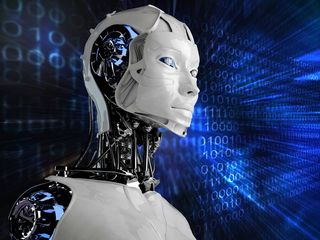
As AI Advances into 'Deep Learning,' are Robot Butlers on the Horizon? (Op-Ed)

Ahmed Banafa is a Kaplan University faculty member for the School of Information Technology with experience in IT operations and management and a research background related techniques and analysis. He is a certified Microsoft Office Specialist, and he has served as a reviewer and technical contributor for the publication of several business and technical books. He contributed this article to Live Science's Expert Voices: Op-Ed & Insights.
Deep learning, an emerging topic in artificial intelligence (AI), is quickly becoming one of the most sought-after fields in computer science. A subcategory of machine learning, deep learning deals with the use of neural networks to improve things like speech recognition, computer vision and natural language processing. In the last few years, deep learning has helped forge advances in areas as diverse as object perception, machine translation and voice recognition — all research topics that have long been difficult for AI researchers to crack.
Neural networks
In information technology, a neural network is a system of programs and data structures that approximates the operation of the human brain. A neural network usually involves a large number of processors operating in parallel, each with its own small sphere of knowledge and access to data in its local memory.
Typically, a neural network is initially "trained" or fed large amounts of data and rules about data relationships (for example, "A grandfather is older than a person's father"). A program can then tell the network how to behave in response to an external stimulus (for example, to input from a computer user who is interacting with the network) or can initiate activity on its own (within the limits of its access to the external world).
Deep learning vs. machine learning
To understand what deep learning is, it's first important to distinguish it from other disciplines within the field of AI.
Sign up for the Live Science daily newsletter now
Get the world’s most fascinating discoveries delivered straight to your inbox.
One outgrowth of AI was machine learning, in which the computer extracts knowledge through supervised experience. This typically involved a human operator helping the machine learn by giving it hundreds or thousands of training examples, and manually correcting its mistakes.
While machine learning has become dominant within the field of AI, it does have its problems. For one thing, it's massively time consuming. For another, it's still not a true measure of machine intelligence since it relies on human ingenuity to come up with the abstractions that allow a computer to learn.
Unlike machine learning, deep learning is mostly unsupervised. It involves, for example, creating large-scale neural nets that allow the computer to learn and "think" by itself — without the need for direct human intervention.
Deep learning "really doesn't look like a computer program," said Gary Marcus a psychologist and AI expert at New York University in a recent interview on NPR. Ordinary computer code is written in very strict logical steps, he said, "But what you'll see in deep learning is something different; you don't have a lot of instructions that say: 'If one thing is true do this other thing.'" [Humanity Must 'Jail' Dangerous AI to Avoid Doom, Expert Says]
Instead of linear logic, deep learning is based on theories of how the human brain works. The program is made of tangled layers of interconnected nodes. It learns by rearranging connections between nodes after each new experience.
Deep learning has shown potential as the basis for software that could work out the emotions or events described in text (even if they aren't explicitly referenced), recognize objects in photos, and make sophisticated predictions about people's likely future behavior.

The Deep Learning Game
In 2011, Google started the Google Brainproject, which created a neural network trained with deep learning algorithms, which famously proved capable of recognizing high-level concepts.
Last year, Facebook established its AI Research Unit , using deep-learning expertise to help create solutions that will better identify faces and objects in the 350 million photos and videos uploaded to Facebook each day.
Another example of deep learning in action is voice recognition like Google Now and Apple's Siri.
The future
Deep Learning is showing a great deal of promise — and it will make self-driving cars and robotic butlers a real possibility. They will still be limited, but what such systems cando was unthinkable just a few years ago, and it's advancing at an unprecedented pace. The ability to analyze massive data sets and use deep learning in computer systems that can adapt to experience, rather than depending on a human programmer, will lead to breakthroughs. These range from drug discovery to the development of new materials to robots with a greater awareness of the world around them.
Follow all of the Expert Voices issues and debates — and become part of the discussion — on Facebook, Twitter and Google +. The views expressed are those of the author and do not necessarily reflect the views of the publisher. This version of the article was originally published on Live Science.
Most Popular

